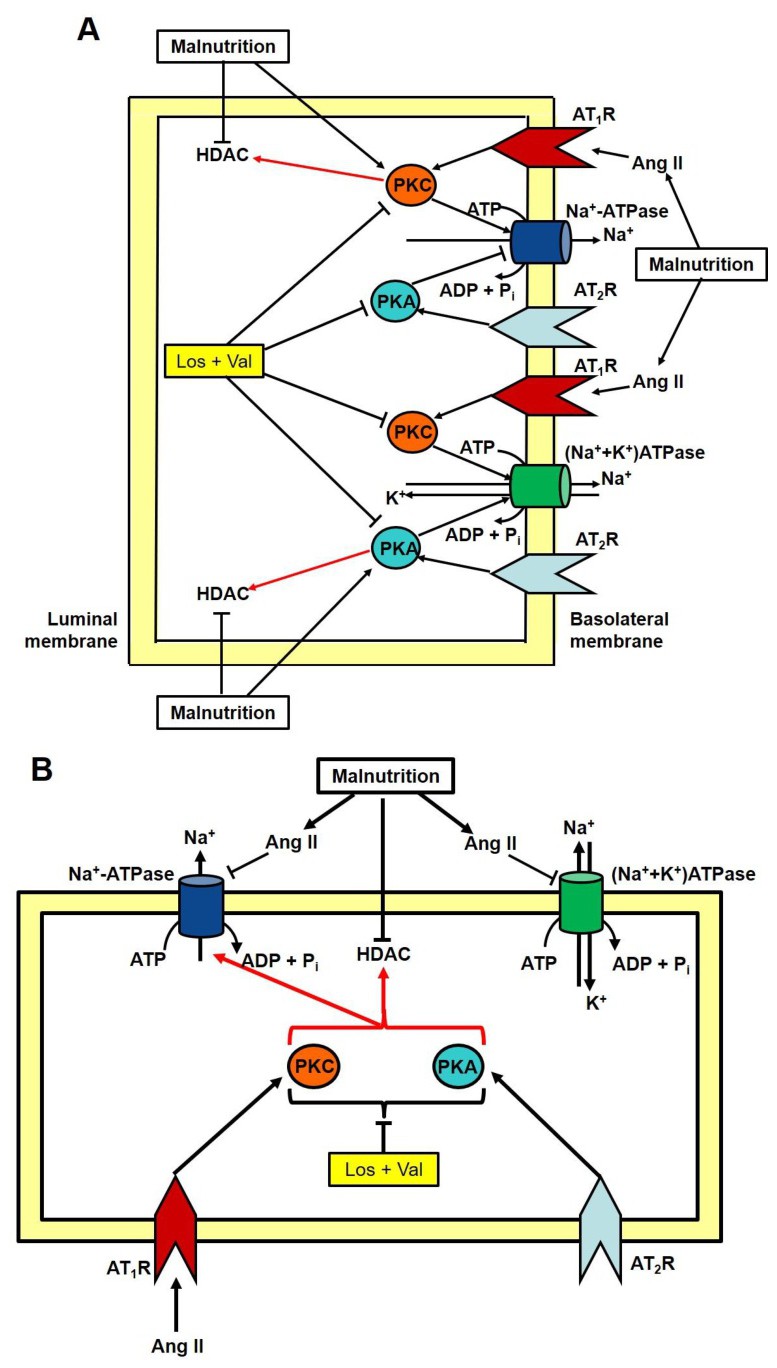Fig. 9. Suggested mechanisms of tissue-specific malnutrition-induced changes and the responses to Losartan and Valproate at the level of the HDAC/RAAS axis in cortex corticis tubules and cardiomyocytes. (A) Cortex corticis tubule. Malnutrition, which increases intrarenal Ang II [9], induces downregulation of HDAC activity (black hammers) and upregulation of PKC and PKA (black arrows). Downregulation of HDAC is totally reversed by blockade of the Ang II → AT1R-associated pathway (Losartan) and by the administration of Valproate (inhibitor of HDAC) (black hammers). Losartan and Valproate restore HDAC, possibly by inhibition of PKC and PKA (red arrows). Unbalance between PKC and PKA culminates with malnutrition-induced downregulation of (Na++K+)ATPase and upregulation of Na+-ATPase. (B) Cardiomyocyte. Malnutrition stimulation of the Ang II → AT1R-associated signaling [8] (upper black arrows) results in downregulation of both Na+-transporting ATPases activities (upper black hammers). Losartan and Valproate recover the control HDAC and Na+-ATPase activities (red arrows), likely due to the inhibition of PKC and PKA activity (lower black hammer), and restores RAAS signaling. The drugs, showing that (Na++K+)ATPase is not influenced by the crosstalk between RAAS and HDAC in the heart, do not modify the activity of this pump. Even though PKA is central in AT2R-associated signaling, we do not have, at present, evidence regarding the participation of AT2R in the crosstalk between HDAC and RAAS in kidney or heart.
